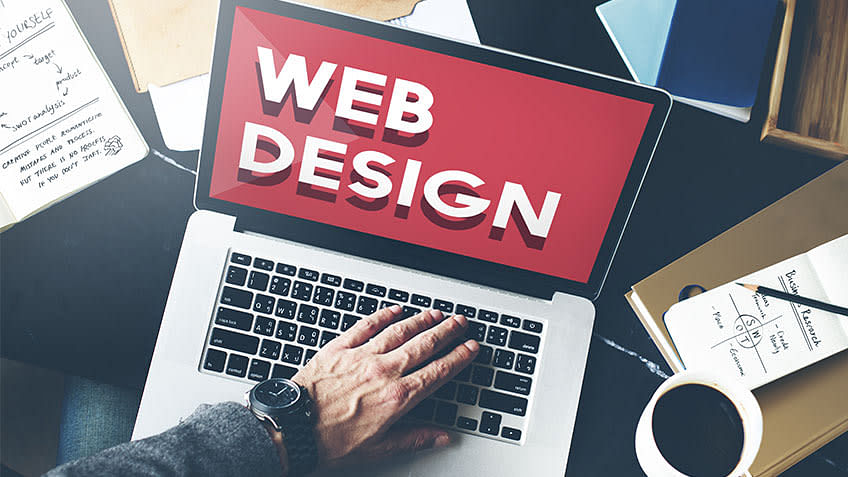A Comprehensive Overview to Crafting Aesthetically Appealing and Functionally Robust Website Design Solutions
A thorough comprehension of fundamental design concepts, along with an eager emphasis on user experience, can dramatically boost the effectiveness of web remedies. By leveraging components such as shade theory and receptive layouts, developers are equipped to produce not just cosmetically pleasing interfaces but additionally ones that promote individual engagement.
Comprehending Layout Concepts
Recognizing layout principles is essential to developing effective internet options that engage users and connect messages clearly. These principles function as the structure for any kind of successful layout project, assisting the aesthetic and practical elements of an internet site. Key design concepts include equilibrium, comparison, alignment, repeating, and distance, each playing an essential duty in establishing a cohesive and aesthetically pleasing design.
Balance entails distributing visual weight uniformly throughout a page, making certain that no solitary aspect bewilders the others. Contrast enhances readability and accentuates important attributes, enabling users to browse the web content easily. Positioning produces order and organization, leading the visitor's eye in a rational flow. Repetition reinforces a consistent visual language, enhancing brand name identification and improving customer familiarity with the interface. Finally, closeness groups associated aspects, helping customers promptly understand partnerships in between various items of material.
Significance of Individual Experience
Individual experience (UX) is important in web layout, as it directly affects exactly how site visitors interact with a website and perceive its value. A properly designed website not just draws in individuals but also keeps them involved, inevitably leading to greater conversion prices and client satisfaction. UX encompasses various aspects, including use, availability, and the total visual allure of the website.

In addition, favorable user experiences foster brand name loyalty and motivate repeat gos to. In contrast, a poor UX can damage a brand's track record and hinder possible clients. Investing in UX style is not simply an aesthetic factor to consider; it is a calculated method that can dramatically impact an organization's bottom line. Eventually, focusing on customer experience in website design is essential for producing functional, appealing, and effective websites that fulfill the needs of contemporary customers.
Shade Theory in Internet Design
Shade theory plays a crucial function in internet layout, influencing not only the aesthetic charm of a site but also the emotional reactions of its customers. Comprehending color dynamics is crucial for producing an effective individual experience. Colors can my explanation stimulate certain feelings; for example, blue often communicates count on and professionalism and reliability, while red can impart exhilaration or necessity.
When picking a shade palette, developers must take into consideration harmony and comparison. Corresponding shades can create vibrancy, while analogous shades use a more tranquil feeling. Utilizing tools like shade wheels can aid in identifying efficient shade combinations. Access must be focused on; making sure adequate contrast in between message and background colors is essential for readability.
Additionally, cultural context plays a substantial duty in color analysis. As an example, while white signifies pureness in Western cultures, it may stand for mourning in some Eastern cultures - web design. A thorough understanding of the target market is crucial when using color concept.
Integrating color psychology into internet style not only boosts aesthetic appeal yet additionally affects individual habits, assisting them toward wanted activities. Eventually, a well-thought-out shade technique can considerably raise the general influence of a site.
Receptive and Adaptive Formats
In addition to color theory, the structure and format of an internet site significantly effect user experience and involvement. web design. Responsive and flexible designs are vital methods for guaranteeing that sites function efficiently throughout a wide variety of gadgets and screen sizes
Receptive style employs fluid grids and versatile photos, permitting the format to adjust perfectly according to the viewport measurements. This strategy ensures a regular customer experience, as content More Info reflows and resizes, keeping availability whether watched on a smartphone, tablet, or desktop computer. Media inquiries play an essential duty in receptive layout by applying various designs based upon the device's qualities.

Both methods aim to boost user experience by focusing on usability and access. Choosing in between receptive and adaptive designs mainly depends upon job requirements, target audience, and wanted customer communications, eventually adding to the efficiency of web style remedies.
Screening and Optimization Techniques
Examining and optimization methods are essential parts of effective internet layout, guaranteeing that internet sites not only satisfy individual assumptions but likewise perform efficiently across various systems. These approaches include an array of methods focused on reviewing usability, performance, and total performance.
A/B screening is a foundational method, enabling designers to compare two versions of an internet page to establish which executes better in regards to individual interaction and conversion rates. User testing is similarly crucial; it includes gathering comments from actual users to recognize discomfort factors and locations for enhancement. This qualitative data can lead layout adjustments that improve customer experience.
Additionally, efficiency optimization methods such as photo compression, code minification, and leveraging web browser caching can considerably improve load times and responsiveness. Tools like Google PageSpeed Insights and GTmetrix supply useful metrics for evaluating website efficiency, enabling designers to make data-driven choices.
Conclusion
To conclude, the integration of fundamental design principles, user-centered methods, and strenuous testing techniques is essential for creating effective website design remedies. By focusing on balance, contrast, placement, and shade concept, developers can boost visual appeal while guaranteeing performance. Responsive layouts add to a seamless user experience across devices, even more promoting engagement. Inevitably, the application of these methods not only boosts individual fulfillment continue reading this however also drives conversion prices, solidifying the relevance of a thorough layout framework.